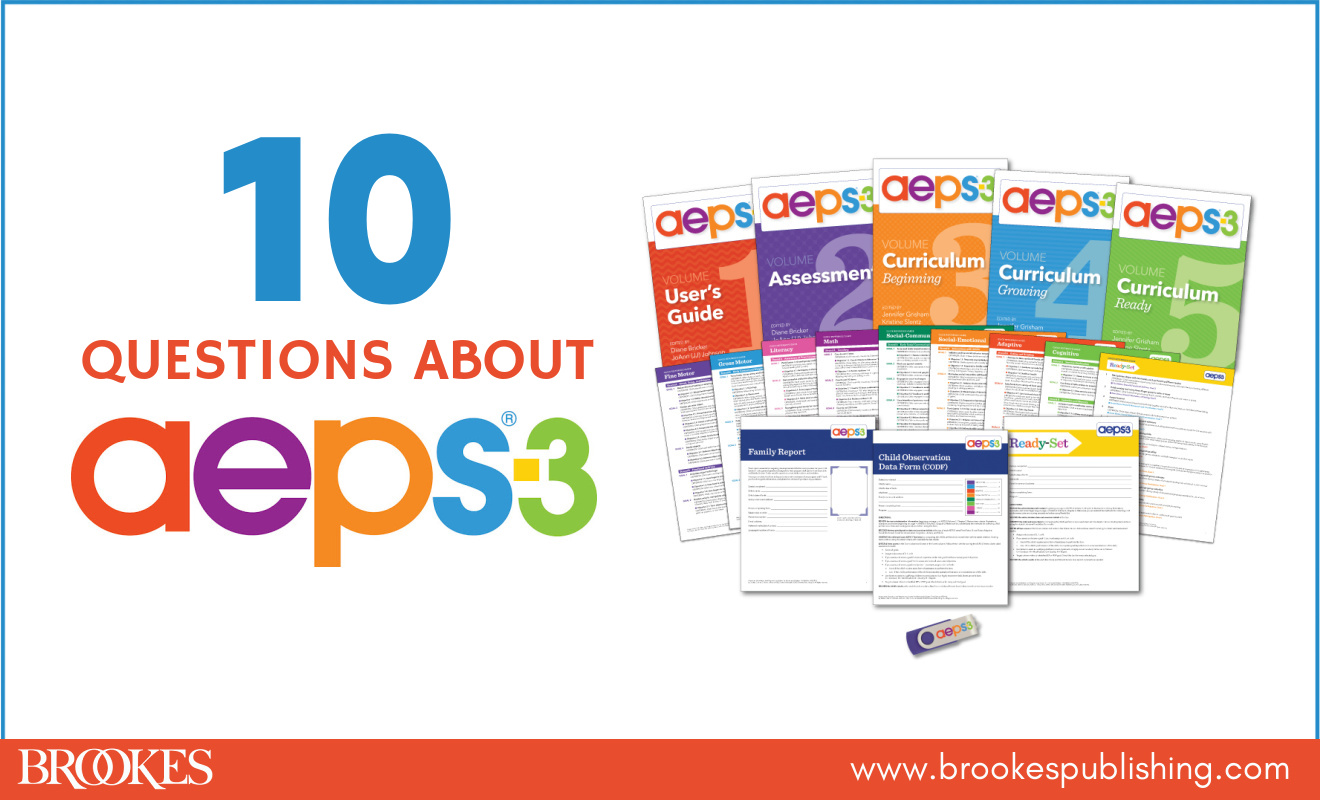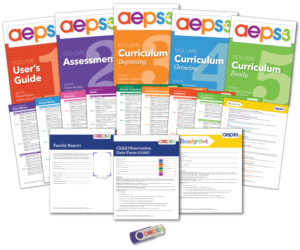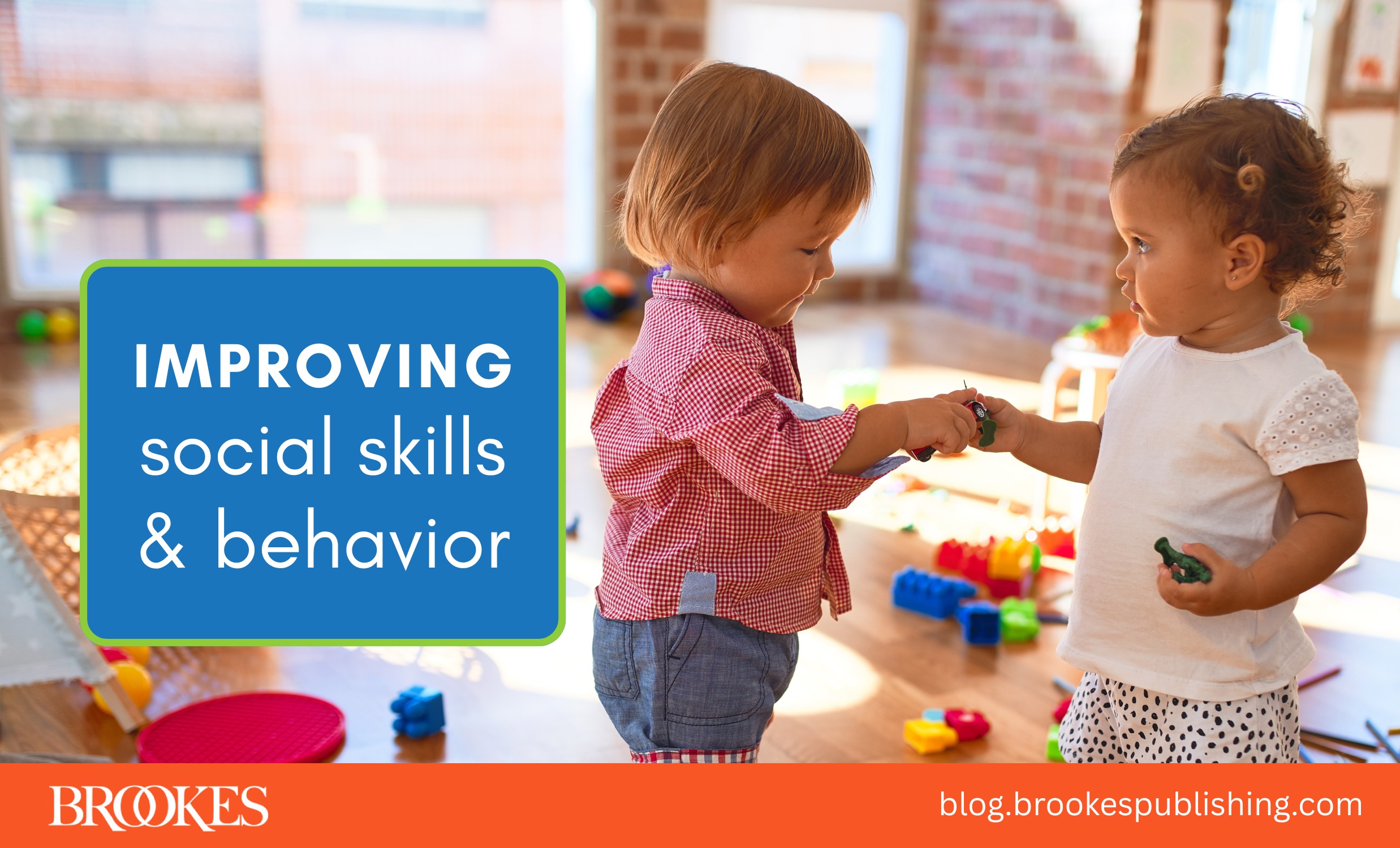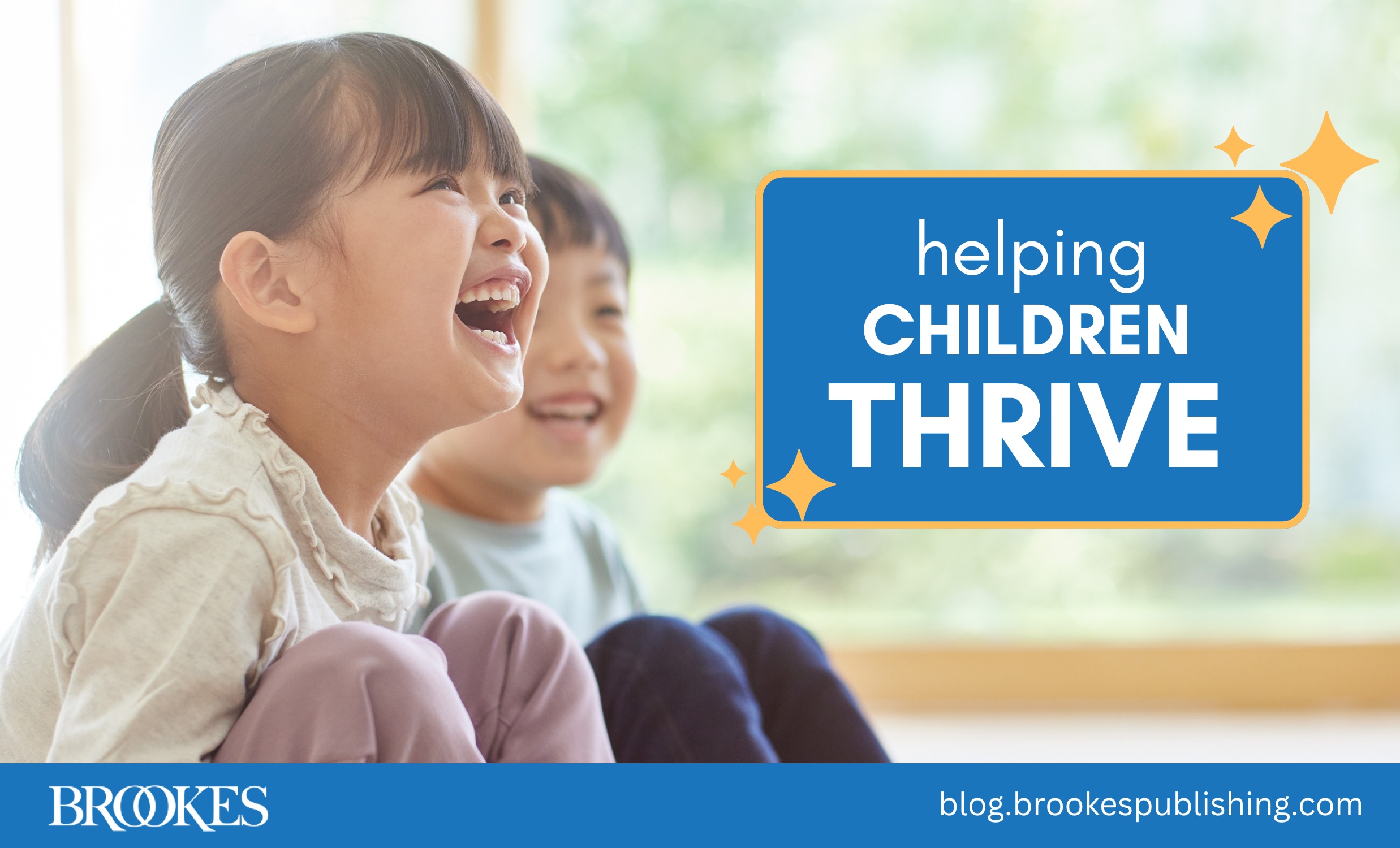AEPS-3: 10 Questions About the New Edition, Answered!
April 21, 2022
 The third edition of Assessment, Evaluation, and Programming System for Infants and Children (AEPS®) released in December, and early childhood professionals across the country were eager to get started with the new edition of the trusted, widely used system. Along with the excitement came some questions about the new edition: What’s changed? Is training recommended for the new edition? Can you use AEPS-3 with the electronic system, AEPSi?
The third edition of Assessment, Evaluation, and Programming System for Infants and Children (AEPS®) released in December, and early childhood professionals across the country were eager to get started with the new edition of the trusted, widely used system. Along with the excitement came some questions about the new edition: What’s changed? Is training recommended for the new edition? Can you use AEPS-3 with the electronic system, AEPSi?
To answer these questions and others, we talked with AEPS-3 co-developer Diane Bricker, Ph.D. In today’s post, she provides authoritative answers to 10 of the most-asked questions about AEPS-3, so professionals can use the updated system with confidence.
Q: How has AEPS-3 changed? What has stayed the same?
Longtime AEPS users will be familiar with much of the content and processes in this new third edition. The foundational model shaping AEPS-3 remains unchanged: AEPS-3 is still a linked system that directly connects assessment to goal development to intervention/teaching and progress monitoring. While test items have been revised and reorganized into one level instead of two, and two new developmental areas (literacy and math) have been added, the test remains an authentic, observational assessment with 3-point scoring and a criterion for each item.
Looking at the entire AEPS-3 system, more substantial changes will be seen with the AEPS-3 Curriculum. The multi-tiered curriculum now has 3 levels (Beginning, Growing, and Ready) reflecting the move to multi-tiered approaches. The curricular content is organized around daily routines and activities (e.g., art, mealtime, naps). However, the basic and critically important feature of linking assessment outcomes to the curricular content remains.
Q: Can AEPS-3 be used to determine eligibility for early intervention or preschool special education services?
AEPS-3 provides a set of empirically-determined cutoff scores that can be used to establish children’s eligibility or corroborate whether children are eligible to receive early intervention/early childhood special education services. Using curriculum-based assessments such as AEPS-3 to determine or corroborate eligibility is best practice because it offers a range of useful information on children’s developmental status, which standardized test do not provide. However, each state has different assessment requirements for eligibility determination; some states require use of standardized, norm-referenced assessments. It is important to confirm your state’s requirements for determining children’s eligibility for services.
Q: Are age norms provided for AEPS-3 items?
No, age norms are not provided for items on the AEPS-3 Test. Choosing targets for intervention should not be based on children’s ages; rather, their status in each developmental area should dictate where intervention/teaching activities should begin. For children who are delayed or lack skills in a developmental area, it is critical to begin at their developmental level, which may be very different from their age. For example, age norms indicate that a two-year-old can walk; however, for a two-year-old who has yet to crawl, targeting walking intervention activities is inappropriate. That child should be working on activities designed to enhance creeping instead.
AEPS-3 items are arranged into developmental sequences that are appropriate for most, but not all children. This makes age norms irrelevant for a test/curriculum designed primarily to help children gain skills appropriate to their developmental level.
Q: My program has used AEPS for a long time. What training do you recommend as we transition to AEPS-3?
As I mentioned earlier, the basic AEPS linked system and approach has not changed from previous editions. However, item content has changed, new areas have been added, and significant shifts in the curriculum have occurred. These changes require that even program staff familiar with previous editions of the AEPS would benefit from some training.
In addition to using the volumes in the AEPS-3 Complete Kit to learn about the new edition, your staff can watch several recorded webinars on AEPS-3. An online interrater reliability certification module will be available in Fall 2023. Brookes Publishing also offers an array of live training options, including two AEPS-3 Institutes later this year. (Explore training options here.)
Q: With AEPS, we can demonstrate very small levels of growth for children due to the volume of items. Will the new AEPS-3 Test still be able to reflect small developmental changes in children?
Yes. AEPS-3’s more precise scoring of emerging skills (i.e., 1A for Assistance, 1I for Incomplete, and 1AI for Assistance/Incomplete) will help you track small developmental improvements for children. The new edition also allows practitioners to better plan their teaching/intervention efforts and monitor progress.
In addition, AEPS-3 includes Foundation Steps that reflect simpler developmental content associated with many goals and objectives, breaking a skill into more basic component skills. These intermediate subskills can serve as building blocks for acquiring the more advanced skills of subsequent AEPS-3 items. The AEPS-3 Test chapter in Volume 2 includes the Foundation Steps to show the developmental sequence, and the AEPS-3 Curriculum Skills Matrix in Volumes 3–5 shows the Foundation Steps that fall between specific AEPS-3 goals and objectives for concurrent skills listed in each routine and activity.
Q: Can you provide information about the reliability and validity of using AEPS-3 with children who speak languages other than English?
AEPS-3 is appropriate for use with all young children, including children who are developing typically, are learning English, have resettled from other countries, are at risk for or have developmental delays, and have documented disabilities. AEPS-3 Test and Curriculum content was chosen to be culturally neutral and to address skills and behaviors that children need to be successful. For example, in the Cognitive area, an item asks if children can ask questions but does not specify the questions to be asked or words to be used. Therefore, a child can receive credit for asking questions in either English or another language and is not penalized for a having a limited English vocabulary.
AEPS-3 Test items are framed broadly so that skills can be measured within the child’s daily context—for instance, depending on the family’s expectations and practices, eating with utensils might involve a spoon, fork, chapati bread, or chopsticks). Items and item criteria can be adjusted to accommodate cultural differences. Users are encouraged to modify content to ensure appropriateness for each individual child’s cultural, language, sensory, and physical characteristics as well as family diversity. For interpreters and translators, the highly relevant, broad concepts support flexibility in finding equivalent ways to examine similar learning targets.
The AEPS-3 Spanish translation was developed by bilingual professional translators who have extensive experience working with young children and families. It was reviewed by a speech-language pathologist working with Spanish-speaking families in early intervention, other native Spanish-speaking professionals from a variety of backgrounds, and focus groups of mothers and fathers whose children receive early childhood special education services to ensure the translation is as accessible as possible for families. International research is underway for AEPS-3 Chinese, French, and Spanish translations. Volume 1, Chapter 6 provides detailed information about how to use AEPS-3 with fidelity with children and families who have diverse needs.
Q: Is there clear guidance about where to start or stop assessing a child with AEPS-3? Now that the test spans birth to 6 years of age, would someone assessing a 2-year-old know when it is appropriate to end the assessment?
Specific guidance for administering the AEPS-3 Test is provided in Volume 2. Below I have shared a brief summary of steps in the process for initial assessment:
- Start assessing with Strand A in the developmental area you want to test.
- Begin with the last goal in Strand A (the most difficult goal).
- If the child scores a 2 (mastery performance) on this goal, give all objectives and goals in the strand a score of 2 and move to the next strand.
- If the child scores a 1 (emerging performance) or 0 (no performance) on the goal, then score all the remaining objectives.
- If the goals in a strand are clearly too difficult or too easy for the child, mark the items R (Report) rather than testing them directly.
To streamline test administration, it is helpful to review AEPS-3 Test items to identify goals that are clearly below and above a child’s development level to eliminate the need to assess them. For example, if you observe a child walking and running, you do not need to observe or directly test the child’s ability to perform earlier developmental items such as rolling over or pulling to a stand. Likewise, if a child is just beginning to hold up their head, then you need not assess the child’s ability to kick a ball. For items that are below the child’s current developmental level (or an item for a skill the child mastered previously), you may assign a score of 2 in the Score column of the CODF and indicate R in the Notes column. For items that are significantly above the child’s developmental level, you may assign a score of 0 with a note of R.
If caregivers are willing to complete some or all of the AEPS-3 Family Report or Family Assessment of Child Skills (FACS), these data can be used to establish a working floor and ceiling for the child’s skills. You may adjust floor and ceiling estimates based on additional information gathered during observation.
Q: What is the difference between the two forms for families?
We know family input and participation are extremely important to effective assessment, goal selection, and teaching/intervention, and AEPS-3 now has two forms to collect information from families. The AEPS-3 Family Report enables programs to obtain information about a child and family and the child’s participation in activities and routines (this report was formerly Section I in the AEPS, Second Edition Family Report). The AEPS-3 Family Report is available to purchase in packages of 10, as well as included as a printable PDF on the AEPS-3 Forms USB and inside the AEPSi system.
Formerly Section 2, the new AEPS-3 Family Assessment of Child Skills (FACS) is divided into 8 developmental areas and collects detailed information about a child’s developmental skills. FACS items are written in user-friendly language that most caregivers can understand. The AEPS-3 Family Assessment of Child Skills is available as a printable PDF on the AEPS-3 Forms USB and inside the AEPSi system.
See samples of the family forms.
Q: Is it possible to use AEPS-3 to assess only one developmental domain with fidelity? For example, can we use the Social-Communication area only if speech is the only suspected area of disability?
Yes, you can assess one developmental area and look at results only in that area. However, it is recommended that a full initial assessment is administered to identify any potential delays and to get a complete picture of the child’s functional skills and developmental repertoire. You can reduce administration time by first assessing all goals, then assessing only the objectives associated with goals scored as 0 or 1. Another way to streamline test administration is to identify goals that are clearly below and above a child’s development level, thus eliminating the need to assess them.
If you’re using AEPS-3 cutoff scores to determine eligibility, it is strongly recommended that you administer the full AEPS-3 Test, which entails scoring all goals in each developmental area. Again, goals that are clearly above or below a child’s current ability can be scored with the R note.
Q: My program uses AEPSi. When can we start using AEPS-3 in the online system?
A new and improved version of AEPSi that includes the AEPS-3 Test is in development. In addition to a completely modern interface, the new system will include parent access to online forms and the ability to use AEPS-3 on a phone and tablet. While the new AEPSi system is in development, we encourage AEPSi users to purchase their AEPS-3 Complete Kit so they can begin familiarizing staff with the new test and curriculum.
 AEPS-3 is ready to order now!
AEPS-3 is ready to order now!
Thanks to Diane Bricker for answering these frequently asked questions about the new AEPS-3! Start planning your transition to AEPS-3 here—you can watch webinars, see a slide deck on the new edition, see samples of new test items, and more.




Write a Comment
Your email address will not be published. Required fields are marked *
Post a Comment